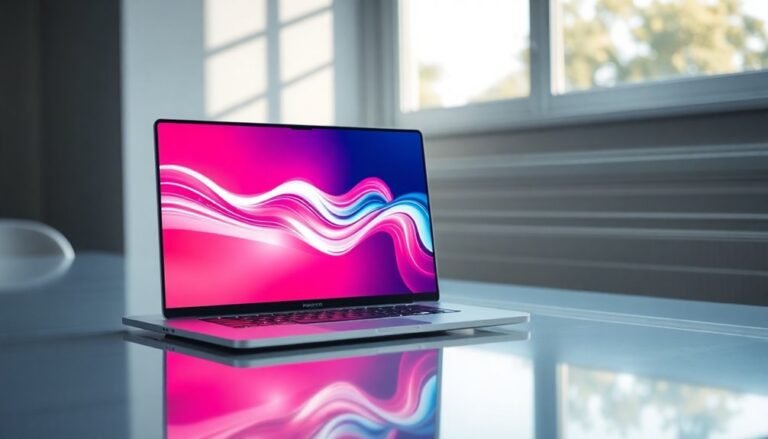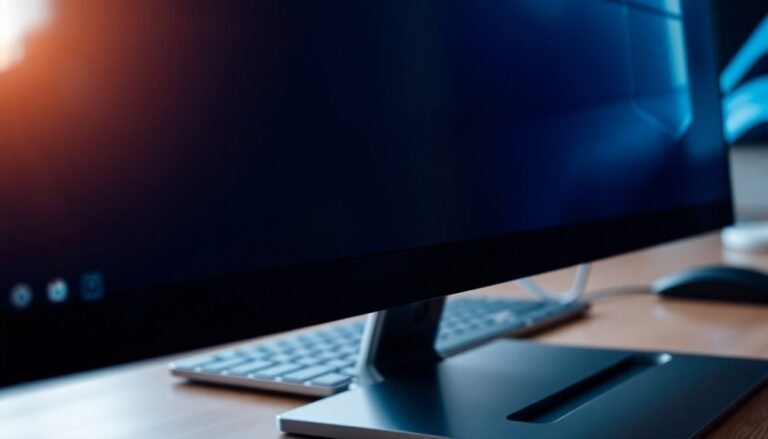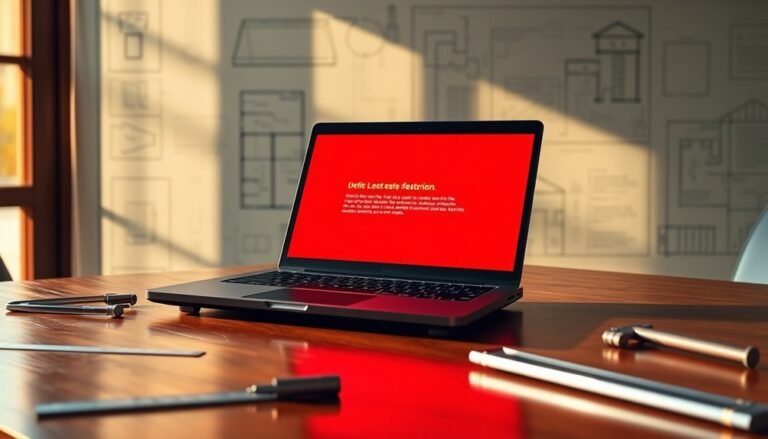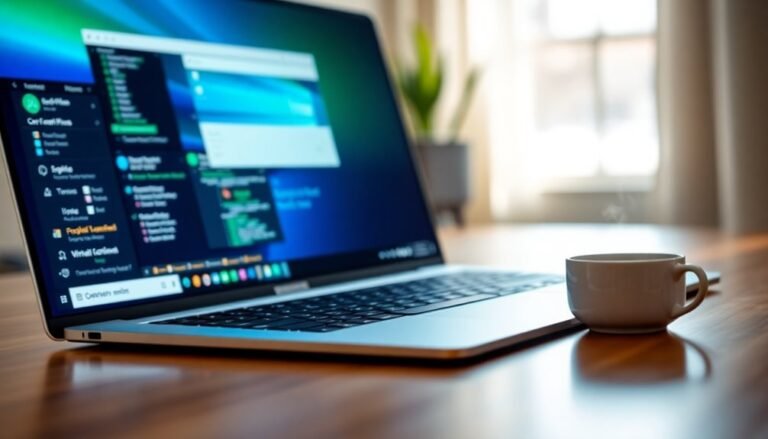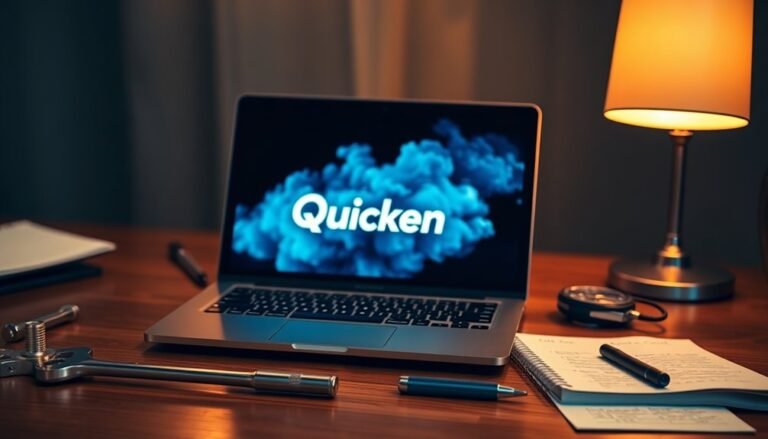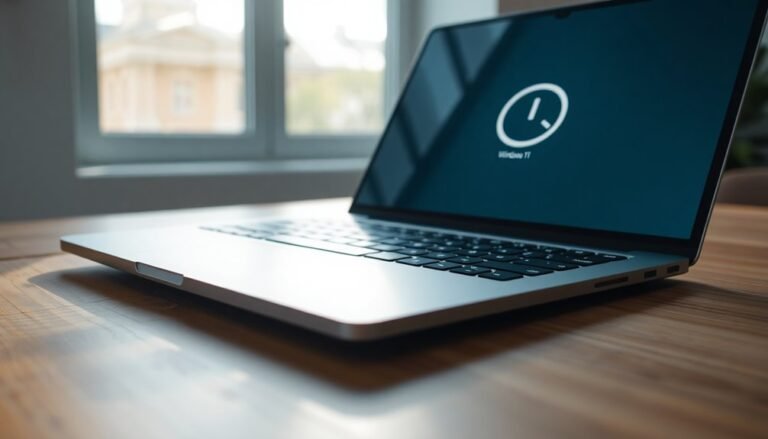Windows Taskbar Not Responding: Fix Taskbar Freeze Issues
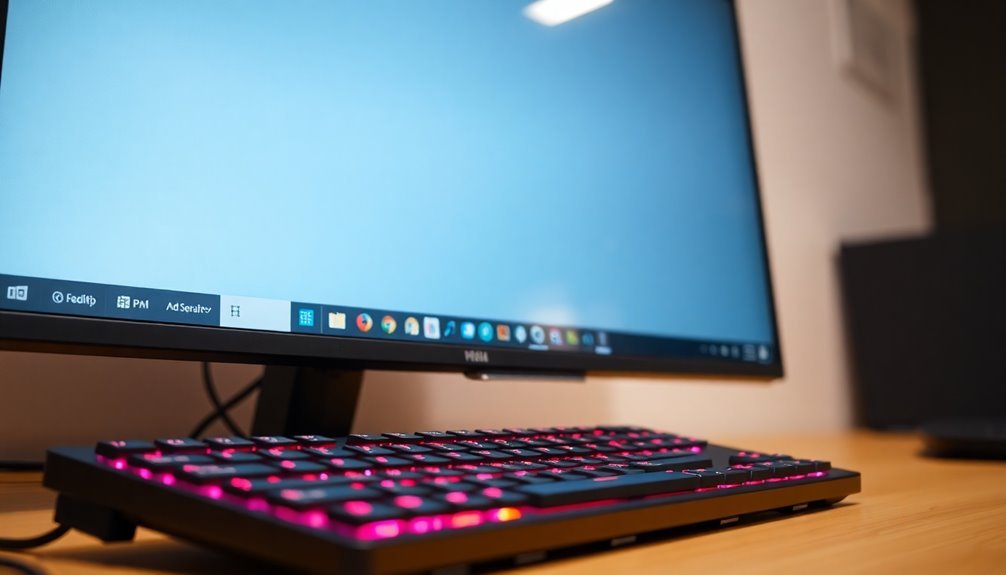
If your Windows taskbar isn’t responding, start by restarting Windows Explorer in Task Manager. You can also boot into Safe Mode to check for conflicts.
Updating Windows and your drivers can resolve underlying issues. Additionally, PowerShell commands can help repair any system corruption.
To enhance your user experience, consider lowering visual effects or setting the taskbar to auto-hide for a cleaner interface. If problems persist, there are advanced fixes and settings adjustments that you can explore further to improve taskbar performance.
Causes of Taskbar Not Responding

Experiencing a non-responsive taskbar can significantly hinder your productivity. There are several primary causes behind this issue that you should be aware of.
One of the leading factors is system file corruption, which often occurs due to improper shutdowns, failed updates, or malware infections. These damaged system files can disrupt Windows Explorer, the core process that manages your taskbar. Additionally, keeping your system updated is vital to minimizing issues related to system file corruption.
Another common culprit is Windows Explorer process instability****, often triggered by incompatible software or an overload of system resources. If your computer is running too many applications simultaneously, it may struggle to keep the taskbar functioning properly.
It’s also crucial to consider outdated or faulty drivers. Missing updates, particularly for graphics drivers, are known to cause various taskbar problems. Regularly updating your drivers can help prevent these issues.
Additionally, software conflicts from third-party applications—such as unwanted utilities or malware—can further compromise your taskbar’s performance. If you’ve installed new software recently, it might be worth investigating if it’s causing the problem.
Lastly, a corrupt user profile might hinder the normal loading of taskbar components. If you’re experiencing taskbar unresponsiveness across multiple user accounts, it could indicate a more significant system-wide problem.
Basic Troubleshooting Methods
When your taskbar becomes unresponsive in Windows, there are several basic troubleshooting methods you can try to quickly resolve the issue.
One effective solution is to restart the Windows Explorer process. To do this, press Ctrl + Shift + Esc to open Task Manager. In the Task Manager, locate Windows Explorer, right-click on it, and select Restart. This straightforward action can often clear UI glitches without necessitating a complete system reboot.
If the taskbar issue continues, consider booting your computer into Safe Mode. To access Safe Mode, open the Run dialog by pressing Windows + R, type “msconfig,” navigate to the Boot tab, and enable Safe Mode. Booting in Safe Mode can help you troubleshoot and determine if any third-party applications are causing conflicts with your taskbar.
Another approach is to use PowerShell to repair the taskbar. To do this, open PowerShell as an Administrator and run the command to re-register app packages. This may resolve any underlying issues affecting the taskbar’s performance.
Lastly, you might want to enable the auto-hide feature for the taskbar through Settings. Activating this feature can prompt the system to redraw the taskbar, offering a temporary fix for any unresponsiveness you may be experiencing. Additionally, it’s important to check for Windows updates to ensure your system is running optimally and to address any software bugs that may be affecting the taskbar.
Updating and System Maintenance
To ensure your taskbar operates smoothly and efficiently, it’s crucial to perform regular updates and system maintenance. Ignoring these vital steps may result in performance problems, such as freezing.
Here’s a comprehensive guide on what you should prioritize to keep your system running optimally:
- Update Windows Regularly: Navigate to Settings > Update & Security to check for the latest updates. Enabling automatic updates is key to maintaining your system’s security and peak performance.
- Ensure Drivers Are Up-to-Date: Open Device Manager (Windows + X) to update your drivers. This action helps prevent hardware issues and reduces the risk of taskbar freezes.
- Conduct Regular Malware Scans: Running full system scans is important to identify any malware that could hinder your taskbar’s responsiveness.
- Perform Disk Cleanup: Regularly cleaning up unnecessary files can free up storage space and significantly improve overall system performance.
Advanced Fixes Using PowerShell and Commands
If you’re experiencing persistent taskbar freeze issues on your Windows device, leveraging PowerShell and various command-line tools can help you effectively resolve these problems. Begin by launching PowerShell with administrative privileges. You can execute the following command to repair and re-register system applications, including the taskbar shell:
“`powershell
Get-AppXPackage -AllUsers | Foreach {Add-AppxPackage -DisableDevelopmentMode -Register “$($_.InstallLocation)\AppXManifest.xml”}
“`
Next, enhance your system’s integrity by using the Deployment Imaging Service and Management Tool (DISM). Run the command below to fix any corruption within your system image:
“`cmd
dism.exe /Online /Cleanup-image /Restorehealth
“`
Follow this with the System File Checker command to repair any corrupted system files:
“`cmd
sfc /scannow
“`
For a quick resolution to freezes, consider restarting Windows Explorer. You can do this by executing the following commands in PowerShell:
“`powershell
Stop-Process -Name explorer -Force
Start-Process explorer
“`
Additionally, ensure that crucial services like User Manager and Windows Firewall are enabled. Use these PowerShell commands to start and manage these services:
“`powershell
Start-Service UserManager
Set-Service -Name “MpsSvc” -StartupType Automatic
“`
Finally, remember to restart your computer after implementing these changes to ensure that they take full effect. Follow these steps diligently to optimize your Windows experience and eliminate taskbar freeze issues effectively.
Taskbar Settings and User Interface Adjustments

Enhancing your Windows experience starts with understanding taskbar settings, which allow you to personalize the user interface to align with your unique preferences.
By customizing your taskbar, you can significantly boost productivity and create a workspace that fits your style. Here are several key adjustments you can make:
- Resize or Remove the Search Bar: Simplify your taskbar for a more streamlined appearance by adjusting or eliminating the search bar, giving you a cleaner interface.
- Utilize Task View: Effectively manage multiple desktops to create focused workspaces tailored to your needs.
- Toggle Widgets: Turn widgets on or off to get live updates like weather forecasts and news headlines according to your interests.
- Auto-Hide the Taskbar: Maximize your screen space by choosing to auto-hide the taskbar, allowing for a more immersive experience.
To access these options, simply right-click on the taskbar and select “Taskbar settings.”
Here, you can also lock the taskbar to prevent accidental changes and easily rearrange or pin your favorite applications.
Personalizing icon behaviors and functionalities helps create an efficient and enjoyable working environment that’s tailored specifically for you.
Boost your productivity and optimize your Windows interface today!
User Experience and Reported Challenges
Many Windows users face significant challenges with the taskbar, hindering their productivity and overall workflow. Commonly reported issues include a frozen taskbar that restricts access to pinned applications and essential notifications. This disruption can compel users to rely on keyboard shortcuts or repeatedly restart the explorer.exe process, resulting in frustrating downtime.
These taskbar problems are often linked to corrupted files, outdated drivers, or conflicts with third-party applications, leading to inconsistent and glitchy behavior. Users may experience symptoms such as unresponsive icons, a missing taskbar, or a frozen Start menu, particularly following system updates or during regular operation.
While some temporary solutions may offer momentary relief, many users find themselves dissatisfied as these issues persist despite various troubleshooting efforts and updates. Ongoing taskbar malfunctions can severely impact productivity and foster a sense of frustration, making it challenging to navigate effectively within the Windows operating system.
If you’re struggling with a problematic taskbar, identifying the root cause is essential for a long-term resolution.
Preventative Measures for Taskbar Stability
Ensuring taskbar stability is crucial for a smooth and efficient Windows experience. By taking proactive steps, you can prevent common taskbar issues from disrupting your workflow. Here are some effective strategies to enhance taskbar performance and stability:
- Pin Frequently Used Applications: Pinning your most-used apps to the taskbar allows for quick access, helping to reduce clutter and improve overall efficiency.
- Utilize Virtual Desktops: Organizing your tasks with virtual desktops can streamline your workflow, keeping your taskbar organized and manageable.
- Adjust Taskbar Settings After Windows Updates: After updating Windows, it’s important to review and adjust your taskbar settings to ensure consistency and prevent glitches that can occur post-update.
- Disable Unnecessary Taskbar Features: Minimizing features like search or widgets can reduce background processes, enhancing taskbar performance and stability.
In addition to these tips, optimizing your system settings can greatly impact your Windows experience.
Lowering visual effects can boost performance while regularly monitoring running applications can help avoid resource-intensive programs that may slow down your system.
Resources for Further Assistance
Looking for solutions to your taskbar bugs? Delve into Microsoft community forums where users share their experiences and solutions to common taskbar issues.
For those who prefer visual assistance, tech-oriented YouTube channels often provide helpful video tutorials that demonstrate effective fixes.
Additionally, don’t miss out on informative technical blogs such as TechFinitive and HP Tech Takes, which feature in-depth articles and command-line solutions for troubleshooting.
A highly recommended method for resolving performance problems is to run the System File Checker (sfc /scannow); this tool can help repair corrupted files affecting your taskbar’s functionality.
Frequently Asked Questions
How Does a Corrupted User Profile Affect the Taskbar?
A corrupted user profile can cause your taskbar to freeze, lose functionality, or even disappear entirely. You may also experience degraded Start menu responsiveness, leading to a frustrating user experience during your sessions.
Can Third-Party Applications Hinder Taskbar Performance?
Yes, third-party applications can hinder taskbar performance, clouding your system’s efficiency. They consume essential resources, leading to delays or freezes. Disabling unnecessary applications might clear the fog, enhancing your taskbar’s responsiveness and overall performance.
What Is the Role of Explorer.Exe in Taskbar Functionality?
Explorer.exe plays an essential role in taskbar functionality, managing its appearance, responsiveness, and user interactions. It controls pinned applications and notifications, ensuring a seamless integration with the desktop environment for a smooth user experience.
How Can I Identify Malware Impacting the Taskbar?
You can identify malware impacting the taskbar by monitoring unusual CPU usage, unfamiliar processes in Task Manager, unexpected pop-ups, system errors, and the sudden appearance of unknown desktop icons or toolbars. Stay vigilant!
Does Restoring Windows to an Earlier Point Fix Taskbar Issues?
Restoring Windows to an earlier point can fix taskbar issues, especially if they started after recent changes. However, it’s not a guaranteed solution; other underlying problems might still need addressing alongside the restore.
Conclusion
In the grand dance of your Windows experience, a frozen taskbar can feel like a misstep. By identifying the causes and applying troubleshooting techniques, you can smooth out that rhythm. Whether you’re updating software or adjusting settings, each action brings you closer to a seamless flow. Remember, keeping your system tuned is like tending to a garden—regular care prevents weeds from choking your productivity. With these tips, you’ll keep the music playing in your digital world.
